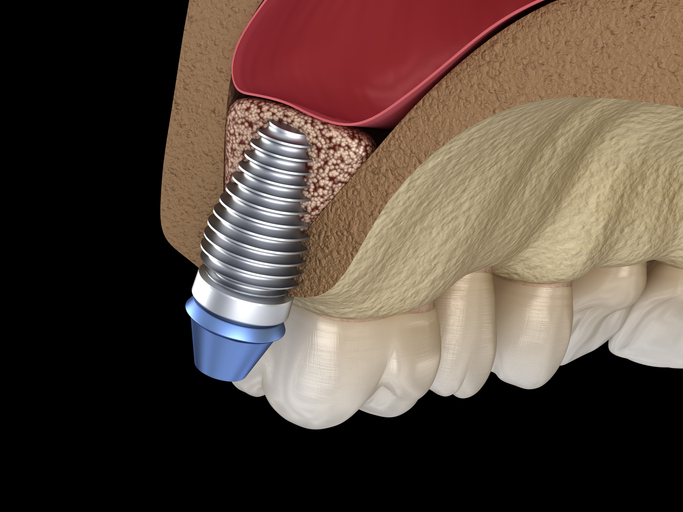
When it comes to dental implant procedures, sometimes additional preparatory steps are required to ensure optimal implant success. One such procedure is a sinus lift, which allows implant dentists to create a suitable environment for the placement of dental implants in the upper jaw. In this blog post, we will explore what a sinus lift entails, why it is necessary, its benefits and considerations, the timeline for implant placement, and who should perform this procedure.
Understanding the Sinus Lift
A sinus lift, also known as a sinus augmentation or sinus elevation, is a surgical procedure performed by implant dentists to increase the amount of bone in the upper jaw’s posterior region, specifically in the area of the maxillary sinuses. This procedure is typically conducted when there is insufficient bone height in the upper jaw to support the placement of dental implants.
Why is a Sinus Lift Needed?
The maxillary sinuses are air-filled spaces located behind the cheeks and above the upper teeth. When tooth loss occurs in the posterior upper jaw, the surrounding bone can gradually shrink or resorb, leaving an insufficient amount of bone to anchor dental implants securely. A sinus lift procedure helps address this issue by lifting the sinus membrane and adding bone graft material to create a stable foundation for dental implants.
Benefits
There are many benefits to having a sinus lift procedure. The most important is that it allows a patient that needs a posterior upper dental implant to be able to receive one. Other benefits include:
- Enhanced Implant Success: A sinus lift provides the necessary bone height to support dental implants, increasing the chances of successful implant integration and longevity.
- Restoring Functionality: By creating a stable bone foundation, a sinus lift allows for the placement of functional and aesthetically pleasing dental implants, enabling patients to chew, speak, and smile confidently.
- Improved Esthetics: A sinus lift procedure enables implant dentists to position dental implants at the ideal height, resulting in a more natural appearance.
- Long-Term Preservation: By preventing further bone loss in the posterior upper jaw, a sinus lift contributes to the long-term preservation of the jaw structure.
Considerations
It is important to consider the following aspects:
- Surgical Complexity: A sinus lift is a more complex procedure compared to a standard dental implant placement, as it involves manipulating the sinus membrane and bone grafting.
- Healing Time: Proper healing is crucial for the success of a sinus lift. It can take several months for the grafted bone to integrate with the existing bone before Dr. Scharf can place dental implants.
- Potential Discomfort: Patients may experience mild swelling, bruising, or discomfort following the procedure. Dr. Scharf will prescribe appropriate medications to manage any post-operative discomfort.
- Adjunct Procedures: In some cases, additional procedures, such as bone grafting or ridge augmentation, may be required to ensure adequate bone support for dental implants.
Timeline for Dental Implant Placement
After a sinus lift, the healing process typically takes around 4 to 9 months, allowing the grafted bone to fuse with the existing bone and create a stable foundation. Once the area has fully healed, the implant dentist can proceed with the placement of dental implants. The exact timeline may vary based on individual healing capacities and the complexity of the case.
Who Should Perform a Sinus Lift?
A sinus lift is a specialized procedure that requires advanced surgical skills and a thorough understanding of the maxillary sinus anatomy. Therefore, it should be performed by a skilled and experienced implant dentist like Dr. Scharf or an oral surgeon who has undergone extensive training in the procedure. Your implant dentist will assess your specific case, evaluate your oral health, and determine if a sinus lift is necessary for the success of your dental implant treatment.
Contact Dr. Scharf for a Consultation
For individuals with insufficient bone height in the posterior upper jaw, a sinus lift is a valuable surgical technique that can provide the necessary support for dental implants. This procedure enhances implant success rates, restores functionality, improves aesthetics and contributes to the long-term preservation of the jaw structure. While a sinus lift may add some complexity and require a longer timeline for implant placement, the benefits it offers make it a worthwhile investment for patients seeking durable and natural-looking tooth replacements.
If you are considering dental implants to restore your smile and oral function, don’t let concerns about bone height deter you. Thanks to advancements in dental technology and techniques like the sinus lift procedure, even individuals with limited bone height can achieve successful and long-lasting implant restorations.
Remember, each patient’s case is unique, and this blog post provides general information. Consult with Dr. Scharf for personalized advice and treatment recommendations. Give Dr. Scharf a call to schedule a consultation.
